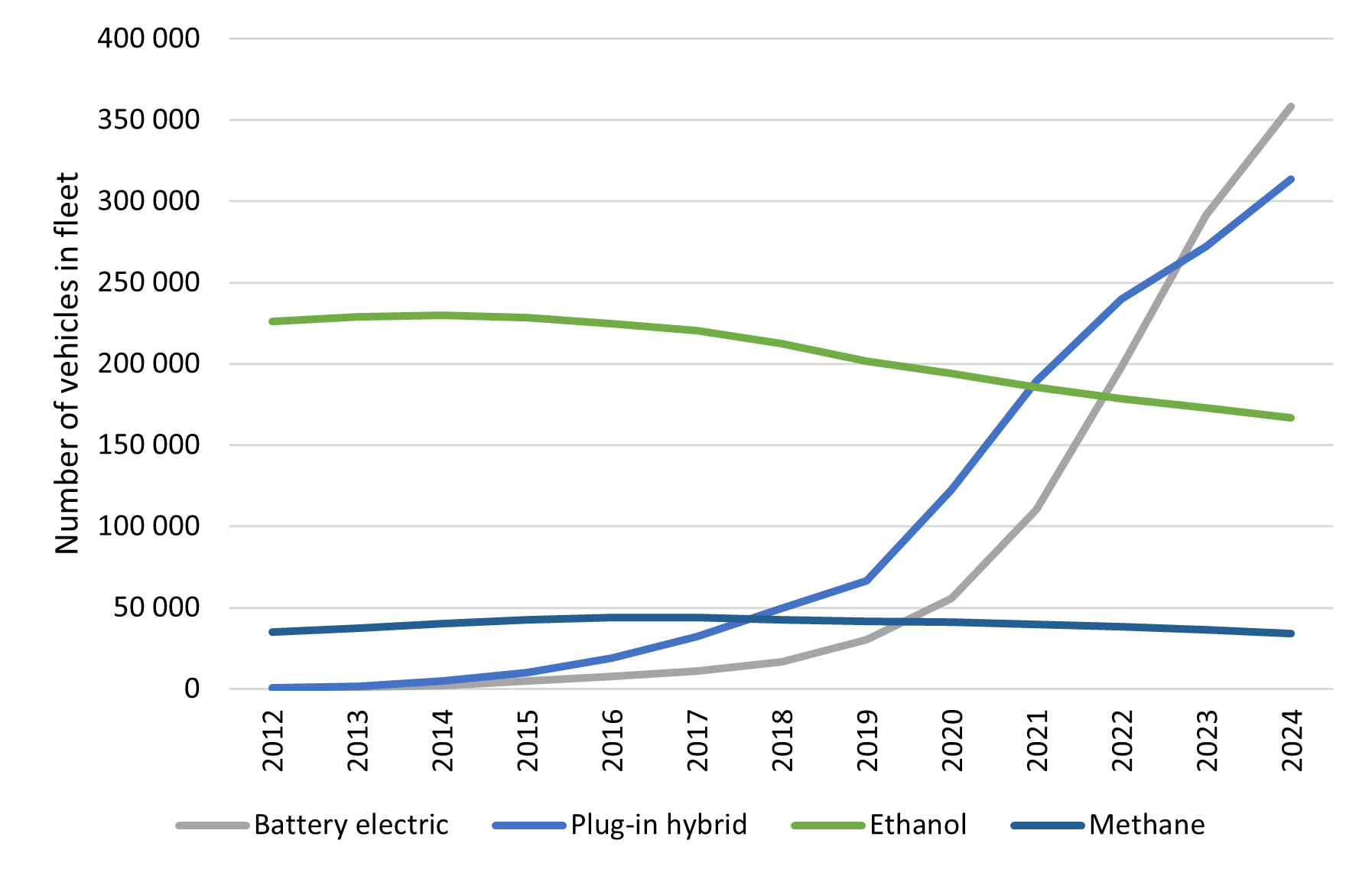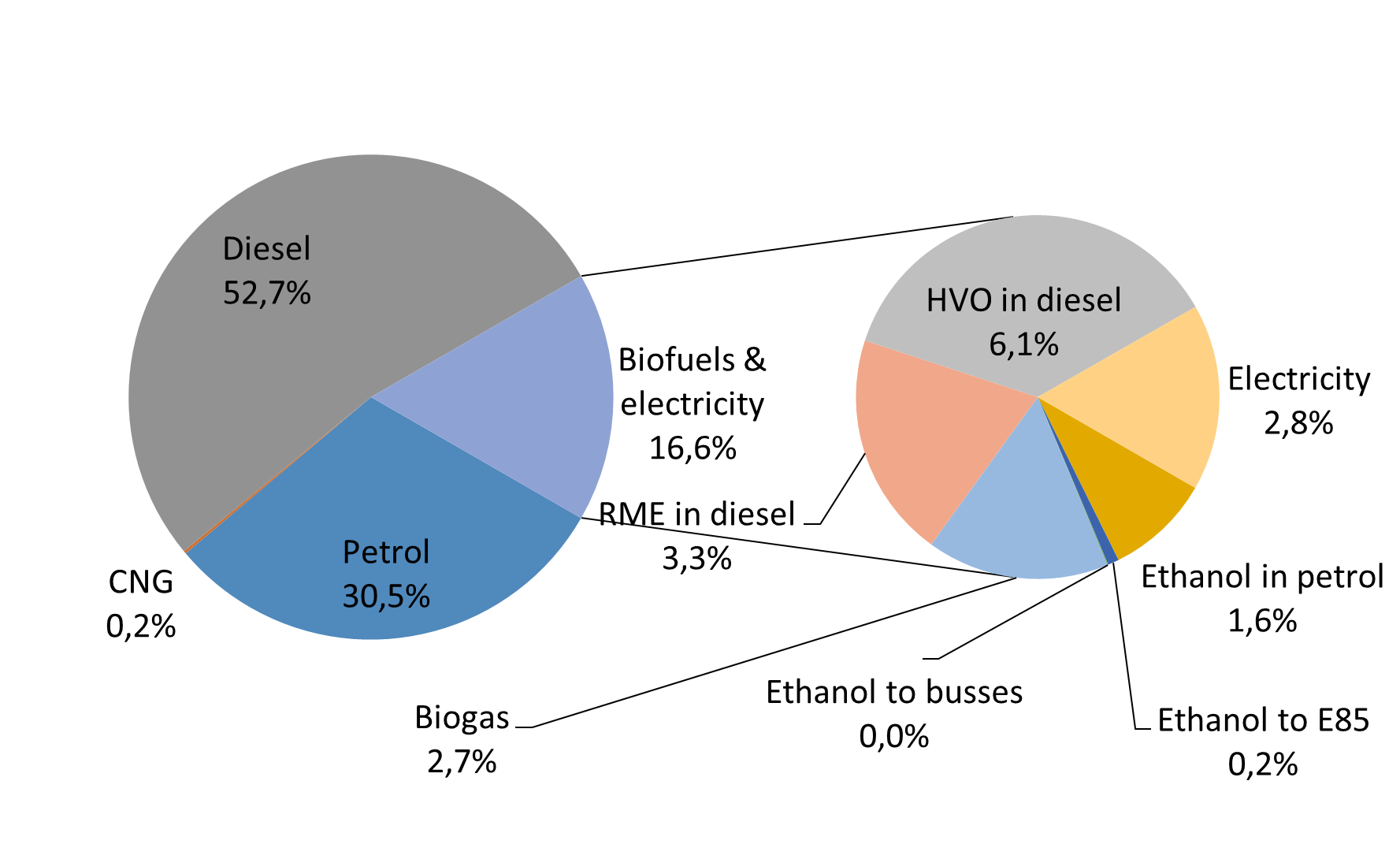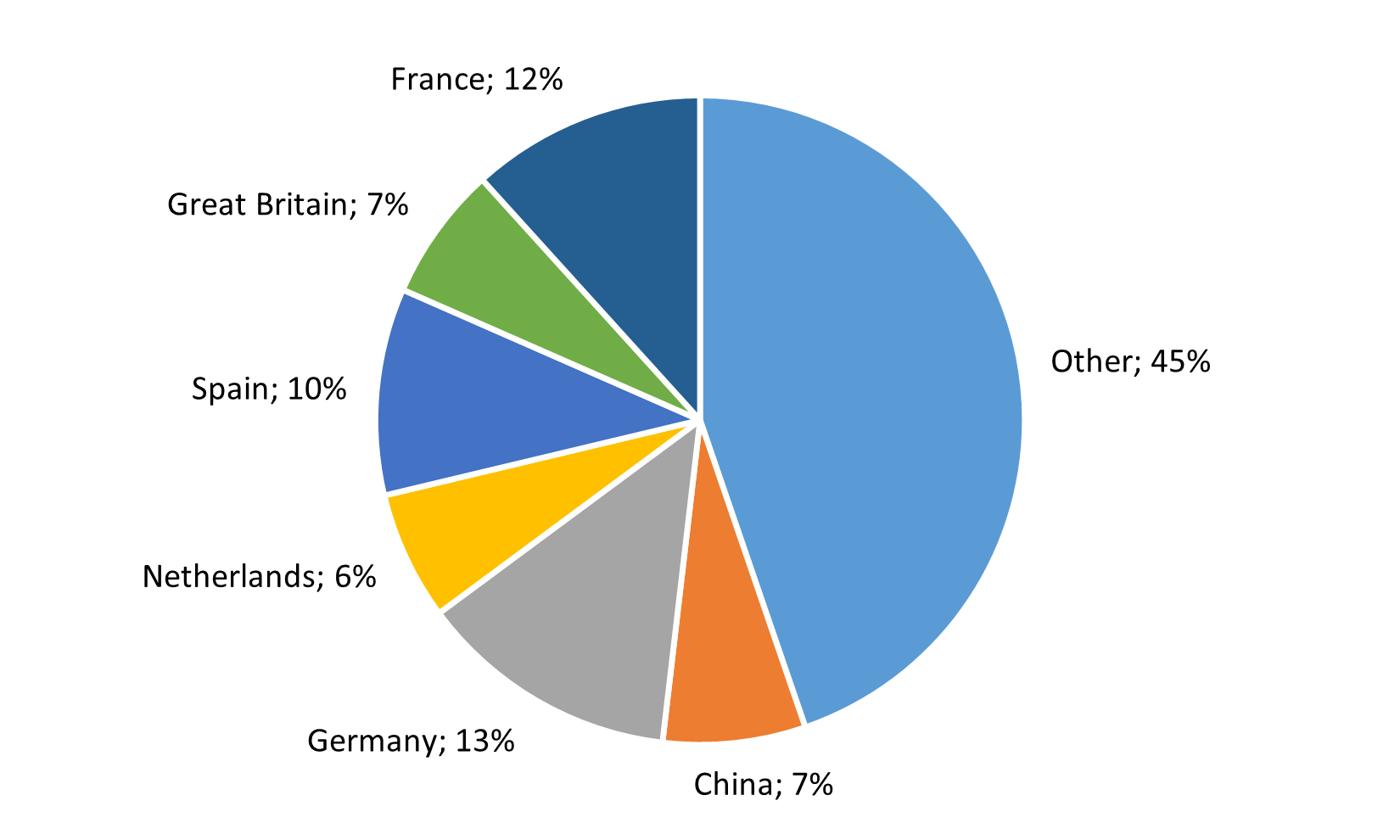Advanced Motor Fuels in Sweden
Drivers and Policies
The overall goal of Sweden’s environmental policy is to be able to pass on to the next generation a society in which major environmental problems have been solved, without increasing environmental and health problems beyond the country’s borders. Sweden aims to become one of the world’s first fossil-free welfare countries. To achieve this goal, the transport industry must be freed of its dependence on fossil fuel by taking measures such as reducing the total energy demand of the transport sector and ensuring that the remaining energy is both renewable and sustainable.
In 2017, Sweden approved a new climate policy framework with a long-term climate goal of no net greenhouse gas (GHG) emissions by 2045, at the latest. What this means is that emissions from activities on Swedish territory will be cut by at least 85% compared with those generated in 1990. To achieve net-zero emissions, Sweden must include flexible measures in its climate strategy. For the transport sector, Sweden has also adopted an emissions reduction goal of at least 70% by 2030 compared with 2010 (not including domestic air travel).
In mid-2018, the Swedish government introduced what was known as a bonus-malus system, under which environmentally adapted vehicles with relatively low carbon dioxide (CO2) emissions were awarded a bonus of up to SEK 70,000 (USD 6,699) at the time of purchase. Under the system, vehicles with relatively high CO2 emissions (above 90 g/km as of April 1, 2021) were subject to a higher tax (malus) during the first three years. The system included cars, light buses, and light trucks. In November 2022, the newly appointed government canceled the bonus feature. However, from February 13, 2024, the bonus was reintroduced for light-duty vehicles (LDVs) with a bonus of up to SEK 50,000 (USD 4,769). A GHG reduction premium was also introduced for zero-emission heavy goods vehicles (HGVs). For HGVs, the premium may amount to a maximum of 25% of the purchase cost.
Another important measure introduced in mid-2018 was the reduction obligation — an obligation for fuel suppliers to reduce GHG emissions from sold volumes of petrol and diesel fuels by incorporating biofuels. In 2024, the reduction obligation was reduced to 6% for petrol from 7.8% and to 6% for diesel from 30.5%. The biofuels included in the reduction obligation system are subject to the same energy and CO2 taxation as fossil fuels. In 2024, the Swedish government decided to increase the reduction obligation, beginning on July 1, 2025, to 10% for both petrol and diesel to contribute further to the Swedish commitment; in accordance with the EU’s Effort Sharing Regulation, this reduction obligation is to be applied until 2030. Sweden has abolished the corresponding reduction obligation for aviation fuel because these fuels will be managed by ReFuel EU Aviation.
Advanced Motor Fuels Statistics
Since 1990, the number of passenger cars in Sweden has increased from approximately 3.5 million to 5.0 million. At the same time, GHG emissions from passenger cars remained stable, at around 13 million tons from 1990 to 2007. However, since 2007, emissions have decreased significantly, measuring about 9.5 million tons in 2024. The main reasons for the reduction are the increased energy efficiency of new vehicles, electrification, and renewable motor fuels.
The fleet of alternative-fueled passenger cars totaled around 870,000 at the end of 2024 (see Figure 1). In addition, automakers have produced an increasing share of conventional diesel vehicles fueled with hydrotreated vegetable oil (HVO)100. However, no statistics are currently available on the size of this share.

Figure 1. Number of Advanced Motor Fuel Passenger Cars in the Swedish Fleet, 2012–2024
Alternative-fueled vehicles correspond to 17.5% of the total fleet of passenger cars (excluding diesel cars that can be fueled with HVO100). Light commercial and heavy-duty vehicles make up 6.9% and 4.7% of the total fleet, respectively. However, vehicles registered as other than petrol- or diesel-fueled number 28.6% of the bus fleet. Diesel-registered buses make extensive use of HVO100.
The use of renewable biofuels and electricity for transport in Sweden amounted to 11.7 terawatt hours (TWh), or nearly 17% of the transportation fuels sold during 2024 (see Figure 2). Approximately 68% of the renewable fuel used in Sweden during 2024 was HVO and fatty acid methyl ester (FAME).

Figure 2. Fuel Consumption (in TWh) within the Road Transport Sector, Preliminary Statistics, 2024
When HVO was introduced in the Swedish market, it was produced from crude tall oil from Sweden, Finland, and the United States. As the demand for HVO grew, the number of feedstocks and countries of origin increased. In 2023, the raw materials were, to a large extent, animal waste (65%), with the remaining shares consisting of used cooking oil, sewage sludge, industrial waste, and other. The majority of feedstocks for HVO are imported, as shown in Figure 3. The average GHG emissions from HVO use in Sweden during 2023 corresponded to around 7.7 g carbon dioxide equivalent (CO2e) per megajoule (MJ). FAME is primarily produced from rapeseed oil. A preferred feedstock, rapeseed oil’s cold climate properties (i.e., cloud point) are more suitable than many other vegetable oils for the Nordic climate.

Figure 3. Country of Feedstock Origin for HVO Consumed in Sweden, 2023
Research and Demonstration Focus
The Swedish Energy Agency has several energy-related research, development, and demonstration programs:
- Biogas Solutions Research Center
- TechForH2 (TechForH2 bäddar för framtidens vätgasteknologi | Chalmers)
- CESTAP – Competence centre in sustainable turbine fuels for aviation and power
- Competence centre, Kompetenscentrum katalys (KCK)
- Hydrogen-related: Ongoing Assignments and Investments
Outlook
The climate goal established in Sweden is ambitious, with a reduction in GHG emissions of 70% in 2030 compared with 2010, and no net CO2 emissions by 2045. Considering the rate of turnover of the vehicle fleet, advanced motor fuels will play an important role in reaching these targets.
Additional Information Sources
Major Changes
In 2017, the Swedish Parliament adopted a new climate law with the following targets:
- No later than 2045, Sweden shall have no net emissions of GHGs to the atmosphere.
- Emissions from domestic transport (excluding aviation) shall be reduced by at least 70% by 2030, compared with 2010.
Benefits of Participation in the AMF TCP
Sustainable and clean energy for transport is necessary to achieve national and international targets. The AMF TCP gives us an arena where we can cooperate with countries worldwide to develop unbiased reports on the effects of various advanced motor fuels.


